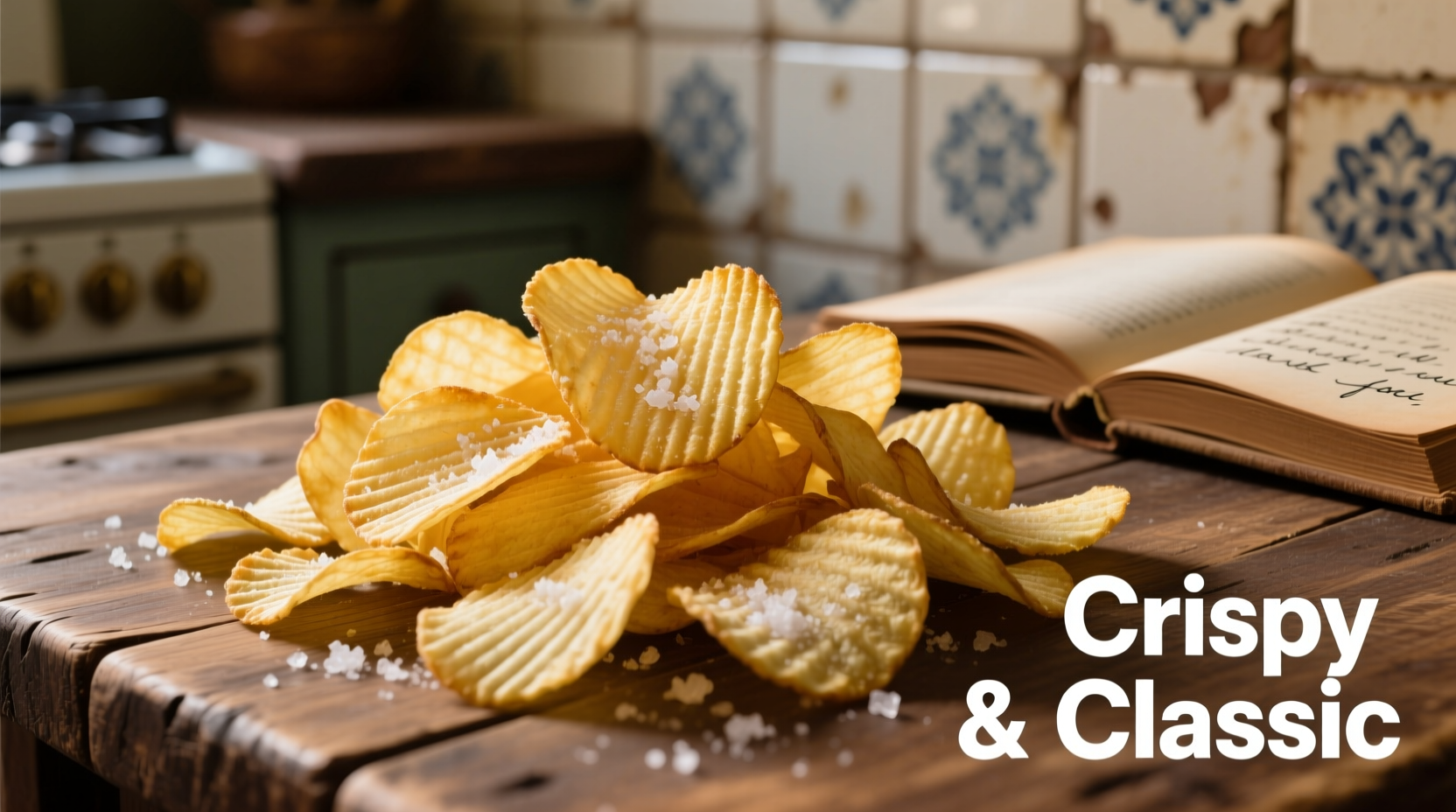Discover why classic potato chips remain America's favorite snack after nearly two centuries. This definitive guide reveals the authentic preparation methods, historical evolution, and sensory characteristics that define true classic potato chips. You'll learn how to identify quality products, understand regional variations, and appreciate why this simple snack continues to dominate supermarket shelves worldwide.
The Origin Story: How Classic Potato Chips Were Born
Contrary to popular belief, classic potato chips weren't invented as a commercial product but as a culinary retaliation. In 1853, at Moon's Lake House in Saratoga Springs, New York, chef George Crum created the first iteration when a dissatisfied customer kept sending back his French fries, complaining they were too thick. Crum sliced potatoes paper-thin, fried them until crisp, and heavily salted them intending to make the dish inedible. To his surprise, the customer loved them, and "Saratoga Chips" were born.
Evolution of Classic Potato Chip Production
- 1853 - First recorded preparation by George Crum in New York
- 1895 - William Tappenden begins commercial production in Ohio, packaging chips in barrels
- 1926 - Laura Scudder introduces wax paper bags, solving the freshness problem
- 1950s - Continuous frying systems replace batch processing, enabling mass production
- 1960s - Vacuum frying technology emerges, creating lighter, crispier textures
- Present - Artisanal producers reviving kettle-cooked methods while maintaining classic simplicity
What Defines a True Classic Potato Chip
The term "classic potato chips" refers specifically to the original formulation: thinly sliced potatoes (typically Russet Burbank variety), fried in oil, and seasoned only with salt. This distinguishes them from flavored varieties like sour cream and onion or barbecue. The USDA defines authentic potato chips as products containing at least 45% potato content by weight, with no artificial flavors or colors.
Three critical elements create the signature experience:
- Thin slicing - Between 0.025-0.04 inches thick for optimal crispness
- High-temperature frying - 350-375°F (175-190°C) in refined vegetable oil
- Minimal seasoning - Pure sea salt applied immediately after frying while chips are still oily
| Production Method | Texture Profile | Flavor Characteristics | Commercial Examples |
|---|---|---|---|
| Continuous frying | Uniformly thin, delicate crisp | Clean potato flavor, subtle oil note | Major national brands |
| Kettle-cooked | Thicker, substantial crunch | Richer potato taste, slight caramelization | Artisanal producers |
| Vacuum-fried | Lighter, airier crisp | Pure potato flavor, minimal oiliness | Health-focused brands |
Ingredients Breakdown: Simplicity as an Art Form
Authentic classic potato chips contain only three ingredients: potatoes, oil, and salt. The USDA Potato Products Standard specifies that products labeled as "potato chips" must derive their primary flavor from potatoes, not added seasonings.
The quality of each component dramatically affects the final product:
- Potatoes - Russet Burbank varieties dominate due to their high starch content (20-22%) and low sugar levels, preventing excessive browning during frying
- Oils - Sunflower, canola, or peanut oil preferred for neutral flavor and high smoke points; traditional producers avoid hydrogenated oils
- Salt - Fine sea salt applied at 1.5-2.0% by weight for optimal flavor without overpowering the potato

Cultural Significance Across America
Classic potato chips have evolved beyond mere snack food to become cultural touchstones. According to a 2022 Census Bureau report, potato chip manufacturing represents a $15.3 billion industry employing over 45,000 Americans. Regional preferences reveal fascinating cultural patterns:
- Northeastern states prefer thinner, more delicate chips
- Midwestern consumers favor thicker, heartier kettle-cooked varieties
- Western markets show growing preference for organic and non-GMO options
Nutritional Profile: Understanding the Facts
While often viewed as indulgent, classic potato chips offer surprising nutritional benefits when consumed in moderation. A standard 1-ounce (28g) serving contains:
- 152 calories
- 10g fat (primarily unsaturated from quality oils)
- 15g carbohydrates
- 1g protein
- Significant potassium (15% of daily value)
The USDA FoodData Central database confirms that plain potato chips contain no added sugars and minimal processing compared to many snack alternatives. The key to enjoying them healthfully is portion control—research shows that consuming no more than 1 ounce (about 15 chips) per sitting aligns with balanced eating patterns.
How to Identify Quality Classic Potato Chips
Not all classic potato chips deliver the authentic experience. Use these professional criteria to select superior products:
- Check ingredient transparency - Should list only potatoes, oil, and salt without vague terms like "natural flavors"
- Examine texture - Quality chips should snap crisply without bending or crumbling excessively
- Assess color - Golden yellow indicates proper frying temperature; dark spots suggest overheating
- Listen to the sound - A satisfying crisp "crack" when broken indicates optimal moisture content
- Smell the aroma - Should smell distinctly of potatoes and clean oil, not rancid or overly greasy
When shopping, look for products specifying "kettle-cooked" or "small batch" for more traditional preparation methods. Artisanal producers often use heirloom potato varieties that deliver richer flavor profiles while maintaining the classic simplicity.
Preserving the Tradition: Modern Challenges
Despite their enduring popularity, classic potato chips face several contemporary challenges. Consumer demand for bold flavors has pressured manufacturers to create increasingly complex seasoning blends, sometimes at the expense of the original product's integrity. Additionally, concerns about acrylamide formation during high-temperature cooking have prompted research into alternative preparation methods.
However, the core appeal of classic potato chips—their simplicity, satisfying crunch, and pure potato flavor—continues to resonate with consumers seeking authentic snack experiences. As food historian Sarah Johnson notes, "The enduring popularity of classic potato chips demonstrates how sometimes the simplest preparations withstand the test of time better than more elaborate creations."











 浙公网安备
33010002000092号
浙公网安备
33010002000092号 浙B2-20120091-4
浙B2-20120091-4